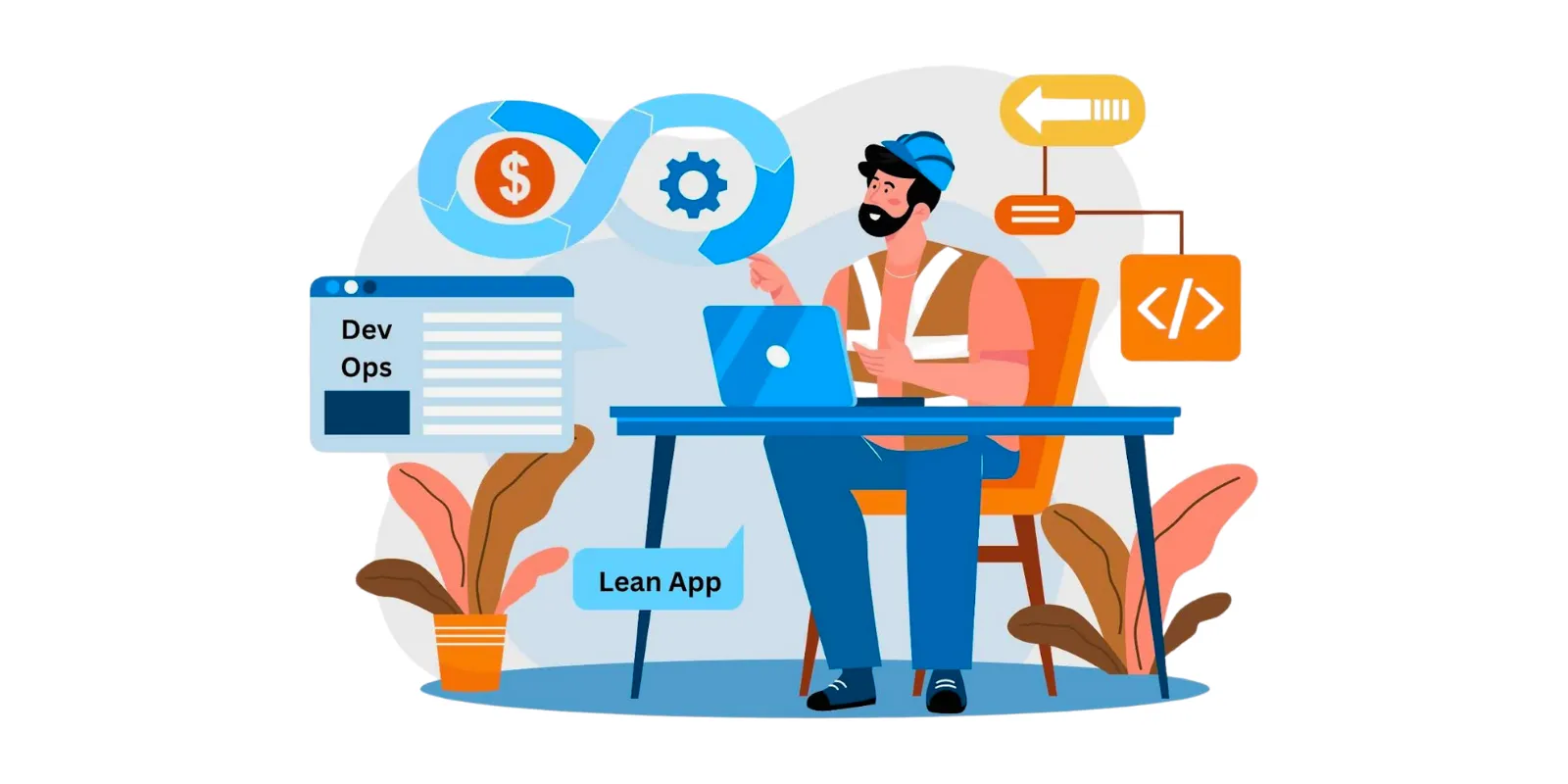
A Founder’s Guide to Cost-Effective App Development

Table of Contents
Every founder seems to be racing to launch an app. It feels like the natural next step for almost any idea. But once the quotes start coming in, the surprise hits fast. App development isn’t cheap, and it’s often far more expensive than people expect. According to recent research, the average app development costs in the UK range from £15,700 to £198,180+.
There’s a common assumption that a simple app should come with a simple price. In reality, costs rise quickly when the vision grows, the design gets fancy, or the build becomes more custom than it ever needed to be.
The good news is that cost-effective app development is absolutely possible. And it doesn’t mean stripping features or lowering standards. It’s about making smarter product decisions from the start, understanding where costs actually come from, and reducing them without compromising quality.
The Real Cost Drivers of App Development
When founders look at a project estimate, it’s easy to focus on the final number. But the real story sits in the decisions that shape how complex the build becomes. Understanding these app development costs early can save weeks of work and thousands of pounds.
-
Number of Screens and User Flows
Every screen adds time. Every user action adds logic. Even simple apps grow quickly when the journey expands from “login + dashboard” to “profiles, filters, notifications, payments, settings, onboarding, and more.” This is why early prioritisation is such a powerful cost lever.
-
Custom UI vs. Template-Based Design
Beautiful, expressive design doesn’t need to be expensive, but fully custom UI often is. Bespoke layouts, animations, illustrations, and micro-interactions can multiply design hours. Templates and proven component libraries, on the other hand, keep things consistent, fast, and affordable, all without looking cheap.
-
Number of Integrations
Integrations may look simple on paper, but each one adds setup, testing, edge cases, and ongoing maintenance. Every external service has its own limits, which all need engineering time. Reducing integrations early is one of the fastest ways to control cost.
-
Backend Complexity and Data Architecture
A solid backend is important, but complexity adds up quickly. Multiple roles, advanced filters, heavy data links, or real-time features can turn a simple build into a full engineering project. A lightweight setup is usually enough for an MVP, especially when you’re still validating demand.
-
Scope Creep Caused by Unclear Requirements
Scope creep can be one of the biggest cost drivers. When goals are unclear, the scope shifts, features often expand. This is when app developers end up rebuilding work. Clear flows and priorities prevent this before it starts.
So, how do you take back control before the costs start climbing and the project begins to drift?
Start With Ruthless Prioritisation (Your Biggest Cost Lever)
If there’s one decision that determines your budget more than anything else, it’s what you choose to build first. Not eventually or “nice to have someday,” but from day one. Ruthless prioritisation keeps your product lean and your costs under control.
1. Focus on the Core User Journey
Start with what users must be able to do and not what they might enjoy. The core journey is the single path your user takes to get value from your product. Everything else is optional.
Most early value sits in a tiny slice of features. It’s the 80/20 rule in action. The core 20% unlocks the outcome your user came for. That’s what should shape your first release.
2. Cut “Nice-to-Haves” Before They Inflate the Budget
Founders often overspend because the first version tries to do too much. Secondary dashboards, advanced filters, deep analytics, and personalised flows may seem harmless, but they quickly expand the logic.
3. Translate Priorities Into a Clear, Fixed Scope
Prioritisation only works when it becomes a clear, fixed scope with defined flows, named screens, and agreed logic. Without this clarity, you fall into vague decisions and changing expectations.
Use Off-the-Shelf Tech Where It Makes Sense
Cost-efficient app development often comes from choosing existing solutions instead of creating everything from scratch.
1. Templates and Component Libraries
Templates and component libraries offer pre-built UI elements that cut design and development time while keeping the product consistent. They help app developer teams reduce the amount of custom work needed in early versions.
2. Third-Party Services Instead of Custom Builds
Features like authentication, payments, notifications, and analytics are far more efficient to implement through reliable third-party tools. These services take away the need for complex bespoke logic, making them ideal for MVPs that need speed, stability, and predictable costs.
3. AI-Assisted Development (With Human Review)
AI can accelerate repetitive coding and initial setup, freeing developers to focus on the features that matter most. With proper human oversight, teams avoid technical debt and maintain clean, scalable code while still benefiting from AI-driven speed.
Simplify Your Design Without Losing Quality
A simpler design almost always leads to a more efficient build. It reduces engineering time, keeps things stable, and still delivers a high-quality user experience. Here’s where most teams can save the maximum without compromising standards:
-
Avoid unnecessary complexity.
Creative elements like custom animations, big transitions, and heavy micro-interactions look appealing but very rarely add meaningful value. They increase design hours and create more testing scenarios. -
Stick to one clear brand theme.
Multi-brand or multi-tenant setups multiply the number of screens and variations needed. A single, unified identity keeps design decisions focused. It also prevents teams from creating multiple versions of the same experience. -
Rely on proven UX patterns.
Familiar flows shorten design time and make the product easier for users to use. Instead of reinventing basic interactions, teams can focus on refining core functionality.
When “Cheap” Becomes Expensive: Risks to Avoid
Smart cost control is essential, but some shortcuts end up far more expensive than founders expect. These are the red flags worth avoiding.
1. Outsourcing to Ultra Low-Cost Agencies
Ultra low-cost agencies often deliver code that looks fine on the surface but hides long-term development problems. These may include unclear structure, poor security, missing documentation, and brittle functionality. The real price appears when a rebuild becomes unavoidable.
2. The Non-Technical Founder Who Tries to “Vibe Code” the MVP
DIY builds may feel empowering, but they very often lead to fragile architecture and features that break as soon as real users arrive. Small technical decisions compound quickly, turning well-intentioned effort into costly fixes.
3. The Danger of Over-Customising Too Early
Building complex, enterprise-level systems on day one drains your budget long before the product proves its market fit. Heavy customisation adds layers of logic that most early users don’t need.
A Smarter Path: Lean App Development Done Properly
A cost-effective MVP involves creating a structured, transparent build that stays focused on what actually matters. This is exactly where Magora’s Lean App Development approach stands out. It gives founders efficiency and control without lowering the quality of the final product. Instead of guessing or overbuilding, you get a streamlined path from idea to working MVP.
1. Why Lean Development Reduces Risk
A lean approach works because it takes out guesswork. It uses a fixed scope and fixed fee, which removes the cost creep that slows so many projects down. Templates accelerate development, while AI assists with repetitive tasks so engineers can focus on meaningful logic. Everything is backed by human QA to ensure stability and clean code.
2. What You Get for £5,000
Magora’s lean app development gives you a complete, functional foundation ready for users, app investors, or internal teams. Every £5,000 build includes:
-
12 functional screens
Covering core MVP flows such as onboarding, authentication, dashboard, list, detail, forms, search/filter, settings, notifications, and help/about. -
Clean, consistent UI
Built from proven components and styled to match your brand. -
Lightweight backend + API setup
Includes basic CRUD operations and supports the core user journey. -
One third-party integration
Such as payments, authentication, or notifications. -
Basic analytics and event tracking
So you can monitor user behaviour and early engagement. -
Functional test pass
Ensuring the key flows work smoothly before release. -
Deployment to one environment
Either your chosen environment or a limited test group. -
Handover checklist + full repo access
Complete transparency, full ownership, and no lock-in.
3. Who This Offer Works Best For
A lean build is ideal for early-stage founders who need to test an idea quickly and affordably. It suits startups testing a new idea, teams building an internal tool, and companies exploring a new market before investing in a full product.
Final Thoughts
For founders, the real secret to a cost-effective app build is understanding which choices move the product forward; and which quietly drain the budget. When you understand what drives costs, prioritise the features that matter most, and rely on proven tools instead of reinventing everything, you get a product that’s faster to build and far more reliable. Most importantly, you avoid the hidden expenses that come from unclear requirements and unnecessary complexity.
A focused, structured approach gives you clarity, stability, and a realistic path to launching something functional without the usual chaos of early product development. That’s exactly why Magora’s Lean App Development offer exists: to give founders a transparent, fixed-cost way to build a high-quality MVP that’s ready for users.
Move from idea to MVP with clarity and control. Team up with Magora, one of London’s leading app development companies, and build a fast, reliable product that doesn’t drain your budget.





